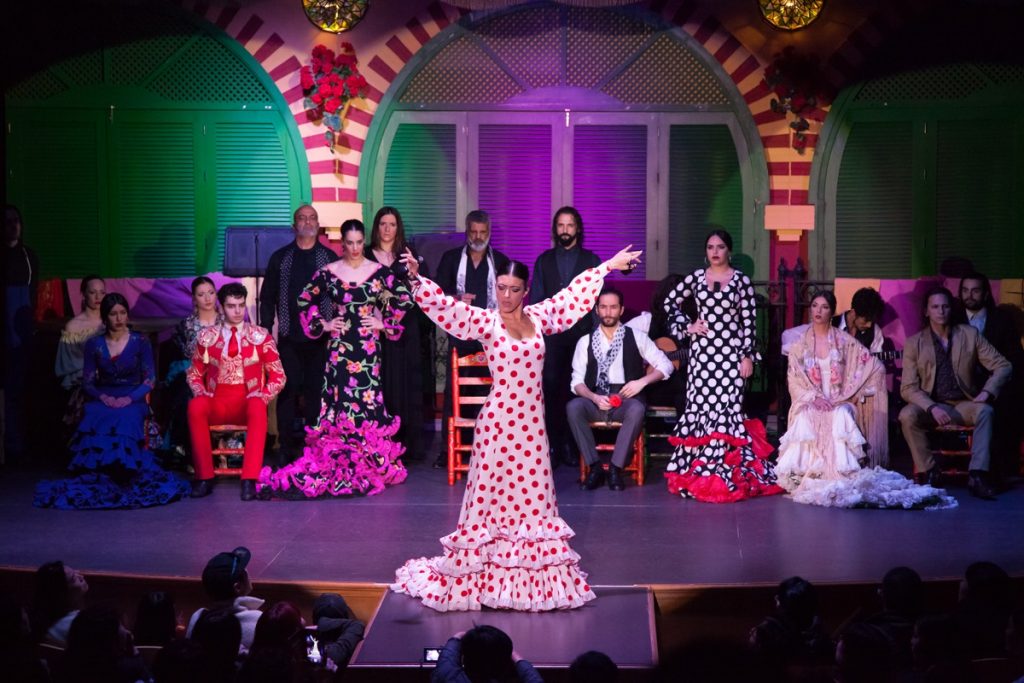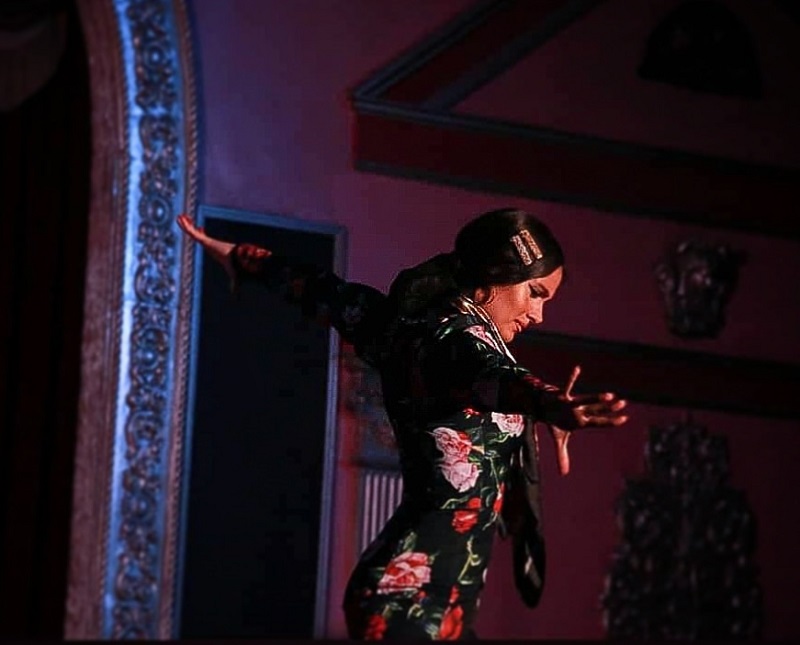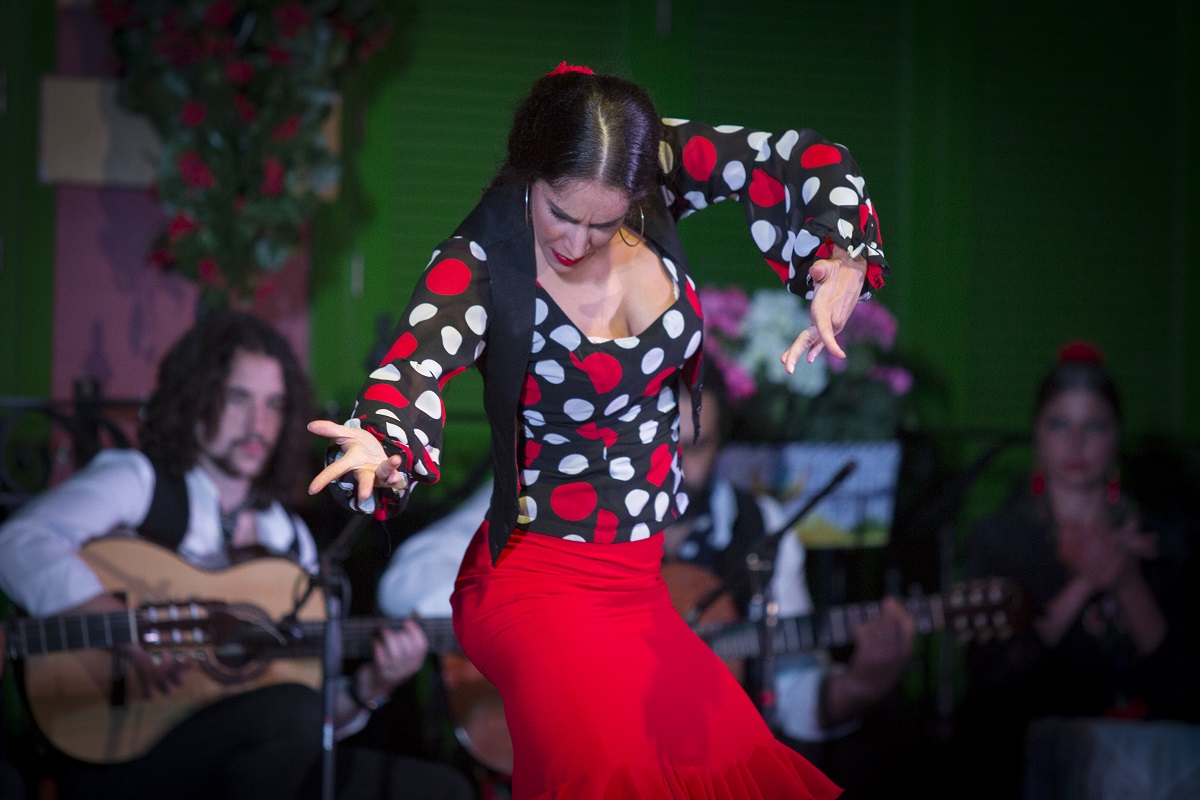
On our journey through the different styles of flamenco, we arrived at the soleá, considered the cante jondo par excellence in the artistic genre. The main features of this art are derived from its musical structure and it is considered as a fundamental style in the conservation of the original beat: combination of a 6/8 and a ¾, being one of the most danced and appreciable genres within flamenco tablaos of all the world.
Its name comes from soledad (loneliness), hence soleá. There are those who indicate that this name refers to the feeling of this flamenco singing (solitude song) and those who link it to the solear of olives or tune of the soleo, alluding to the place where the olive gypsies work and sing to alleviate the day.
The origin of the soleá is found in the jaleo, a combination that emerged in the 19th century between the jota, the fandango and the seguiriya, singings very typical of southern Andalusia. During this century, there was a musical transformation towards “gypsyization” that led to the emergence of this flamenco style.
The older the soleares are, the lighter their compass. The jaleos, so popular in the years of the birth of the soleá, as well as the polo and the caña, seem to be the antecedents of this genre, which had its boom during the splendor of the old singing cafes, of which the tablaos they are his heirs today.

The performance of soleá singing has guitar and clapping accompaniment. Like many of the flamenco styles, it has a formal structure that responds to the following model:
A guitar introduction, accompanied by a departure ayeo (the singer’s famous ‘ay ay ay’).
The cante (singing), made up of various types such as the brave cante and auction, accompanied by the guitarist’s improvisation collected under the name of “falsetas”, which appear interspersed during the performance.
The closing of the performance, given the time in which it is performed, causes a silence that encourages the public to broadcast the famous “olé”.
As for the metric, the soleá shares a great similarity with the seguiriyas, with a 3 × 4 rhythm and a twelve-beat measure, which are divided into two of six. The stanza is made up of four or three octosyllabic verses and its theme evokes deep and sad feelings.
The soleá dance is one of the most beautiful in flamenco. It is usually performed by a solo dancer and is a very expressive performance. An ideal moment to show off the artist. The movements of the hands, arms, body, waist breaks and hip hips are often accompanied by tapping and the flamenco dancer’s movements during her performance.
It is one of the most significant flamenco dances and many of its features are seen in other styles, such as alegrías. The escobilla is another element that characterizes the soleá, as well as the artist’s deep feeling and seriousness while she dances.

Within this cante jondo several types must be distinguished. On the one hand, we find the soleá grande (four lines); the soleá del cambio (to finish off and in another tonality); the soleá por bulerías (harmony of soleá and compás de bulería); the soleá corta, the soleariya (shortened melody soleá with the first verse reduced to four syllables); the soleá apolá (with which the pole closes, another type of triana soleá); the soleá de preparación (to start a specific cante); and those of zurraque (typical of the potters).
The soleá has been establishing its own style in each place where it has been practiced, for example, it is inevitable to speak of the soleá of Triana, so typical of this neighborhood, the cradle of Sevillian singers such as El Moreno or Francisco Amaya. Referring to the styles of other corners of Andalusia, we must also speak of those of Cádiz and the Ports, of Jerez, of Alcalá, of Utrera and Lebrija, of Córdoba and Marchena, among others.
Soleá is a complex flamenco style, full of feeling and considered one of the most traditional of this artistic genre. A style that has influenced others and is part of the essence of this art. Seeing a soleá live is a highly recommended experience for lovers and fans of pure and traditional flamenco.
© 2024 El Palacio Andaluz. All rights reserved.